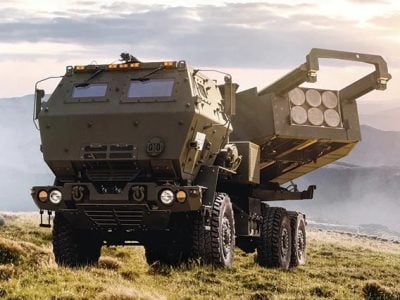NATO “Terrorist Attacks” against Russia. Trying to Push Russia into Direct Confrontation? Will Moscow “Keep its Cool” or Retaliate?

On June 23, Russia was hit by a series of very well-coordinated terrorist attacks by NATO, the Neo-Nazi junta and Islamic radicals. The combined death toll was nearly 30 people. And while NATO-controlled extremist ideologies such as Islamic radicalism and ultra-liberalism/wokeism can be extremely damaging to societies at large, the world’s most aggressive racketeering cartel often directly engages in terrorist activities.
Whether it’s NATO’s direct and indirect aggression against the world or “occasional strikes” within the framework of the vaunted (neo)colonialist “rules-based world order“, the belligerent alliance is always on the lookout for new victims and plunder. However, in the last two and a half years, it has become far more aggressive than ever before, poking the Bear and trying to push Russia into a direct confrontation. All this has brought the world to the brink of thermonuclear annihilation.
Attempting to avoid this scenario, Moscow kept its cool even in moments of almost universal public anger and cries for retaliation. However, things changed dramatically after June 23. Whether the date was chosen by NATO to nearly coincide with the beginning of “Barbarossa” (June 22) is unclear, but its symbolism cannot be ignored.
The political West has demonstrated time and again that it’s the virtual heir to Nazi Germany and much of the same actions and policies that Berlin used 80 years ago are now being recycled by NATO.
This was a step too far for the Kremlin and it reacted. Since the terrorist attack on Sevastopol, the Russian Aerospace Forces (VKS) were instructed to start suppressing or even downing US/NATO ISR (intelligence, surveillance, reconnaissance) assets over the Black Sea to ensure these cannot help the Neo-Nazi junta target Russian civilians.
Ever since, the world’s most aggressive racketeering cartel hasn’t dared fly close to Crimea, mostly limiting its activities to airspace over NATO-occupied Romania. However, the Russian military realized it needs to do even more to ensure the safety of its people. While detecting and targeting NATO-sourced weapons was always a priority for Moscow, as evidenced by regular updates on the destruction of various assets, particularly the overhyped HIMARS, June 23 was a turning point.
Thus, a more intense hunt for HIMARS, M270/MARS and ATACMS started. By June 27, at least two launchers were destroyed by an “Iskander-M” SRBM (short-range ballistic missile). The HIMARS and M270 were stored in a warehouse near the settlement of Yasenovoe in the Donetsk oblast (region). On June 27, video footage of the precision strike was posted on various social networks, particularly Telegram.
According to various military sources, at least 20 enemy soldiers were neutralized, composed most likely of mixed NATO crews and the Neo-Nazi junta forces. Apart from the destruction of the system itself, the elimination of personnel capable of operating and maintaining the launchers is a high priority for the Russian military. Another system was detected by a drone while withdrawing to a warehouse near the settlement of Shevchenkove in the Nikolayev oblast. The warehouse was then promptly obliterated by an “Iskander-M”. The video of the precision strike appeared online on June 28, while the after-action reports suggested that the strike neutralized 25 enemy troops. However, the Kiev regime and NATO were given no time to consolidate, as the Russian military continued hunting down their overhyped HIMARS and M270 already the next day. What’s more, the damage was even worse this time.
Namely, according to military sources, another precision strike on the village of Matveyevka in the Zaporozhye oblast resulted in the destruction of a warehouse with various munitions for the HIMARS/M270. The building reportedly housed both rockets and ATACMS tactical ballistic missiles. Another stockpile was hit shortly afterward in the nearby Kamennoye settlement. This forced the Neo-Nazi junta troops to disperse to reduce losses. However, the situation was hardly better. Quite the contrary, it turned out to be even worse. In the last two days alone, reports surfaced about the destruction of seven more HIMARS/M270 systems, including those armed with ATACMS missiles. The destruction of the first three was reported on July 8. The Russian Ministry of Defense (MoD) posted video footage from one of its tactical ISR drones, showing the elimination of the systems in the Kherson oblast.
The precision strike was conducted at night, after the launchers were detected near the village of Klapaya. Minutes later, an “Iskander-M” obliterated the position. The Russian MoD reported that dozens of NATO personnel were eliminated, while it was also suggested that these launchers were among those used in the previously mentioned terrorist attack on a packed beach in Sevastopol. Some unofficial reports also suggest that this Russian night strike thwarted a NATO plan to launch another attack on the Crimean peninsula, as the launchers were loaded precisely with the ATACMS missiles when the “Iskander-M” hit their position. However, this wasn’t the end of it, as on July 9, more footage was posted by the Kremlin’s MoD, with reports showing the destruction of another four HIMARS systems, and once again, the “culprit” was the “Iskander-M”. Two were destroyed in the Zaporozhye and another two in the Kherson oblast.
The latter were detected in Novopetrovka in the Kherson oblast, with the precision strike destroying two launchers, five escort vehicles and neutralizing at least 20 enemy personnel. The enhancement of the Russian military’s tactical and strategic ISR capabilities resulted in the easier detection and destruction of assets such as the HIMARS.
The Kiev regime has had a lot of trouble in this regard, particularly in recent months, as its overhyped NATO-sourced weapons are having trouble going past the world-class Russian electronic warfare (EW) systems, meaning that their lethality has been greatly reduced. At the same time, the aforementioned Russian ISR is making it far riskier to engage in combat with the HIMARS, with or without the ATACMS. The usage of regular guided rockets has become ineffective due to EW, while the usage of larger ATACMS makes it easier to detect and neutralize the launchers.
This sort of catch-22 situation is turning the HIMARS/M270 into yet another overhyped NATO-sourced weapon that can’t really do what its manufacturers are marketing it for, denting its reputation, most of which was the result of NATO propaganda either way. And it should be noted that this certainly isn’t the only Western weapon whose reputation has been tarnished by the Russian military. This was particularly apparent during last year’s much-touted counteroffensive, when NATO-sourced armor was obliterated by Russian drones, attack helicopters and specialized ATGM teams.
More recently, Su-57 next-generation fighter jets, “Tornado-S” MLRS and Russia’s unrivaled hypersonic weapons all proved their combat capabilities against the latest NATO gear. And all this was before the Russian government decided to massively increase investment into the military and also reshuffle the MoD for maximum efficiency.
*
Note to readers: Please click the share button above. Follow us on Instagram and Twitter and subscribe to our Telegram Channel. Feel free to repost and share widely Global Research articles.
This article was originally published on InfoBrics.
Drago Bosnic is an independent geopolitical and military analyst. He is a regular contributor to Global Research.
Featured image is from InfoBrics


